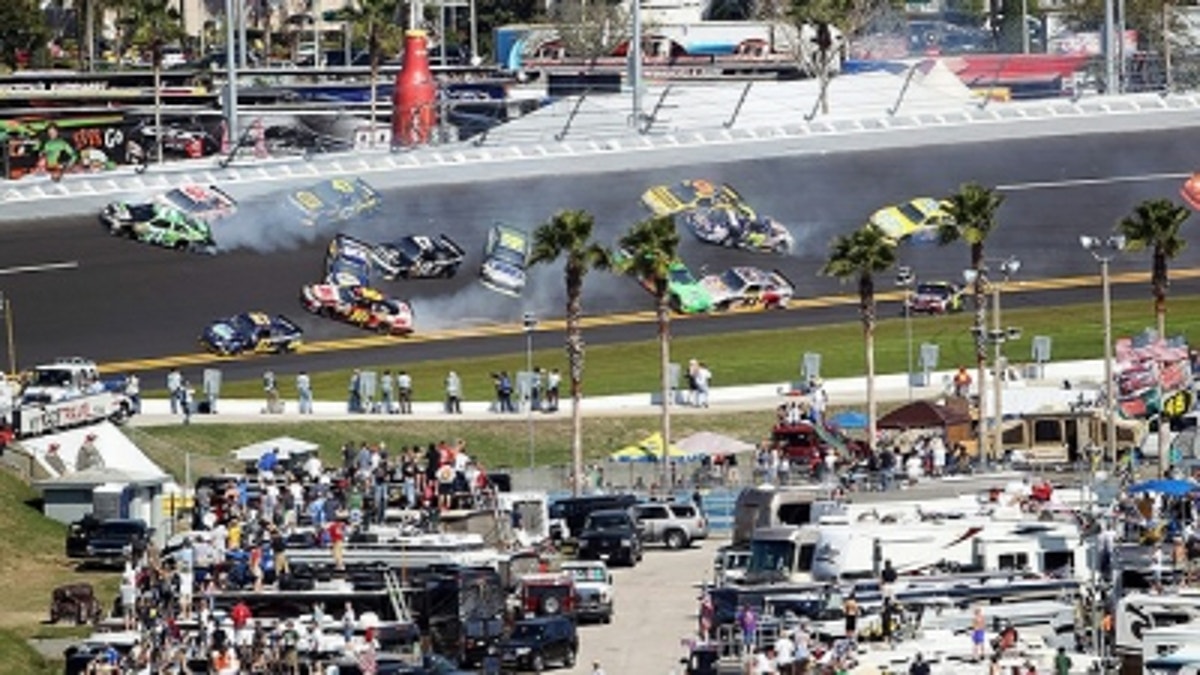
A fairly long list of items makes this year’s Daytona 500 unpredictable.
The 200-lap race will be the first points event in which the race cars will be powered by fuel-injected engines. Fans won’t see or hear anything significantly different as teams move on from the traditional carburetor setup, but on pit road there will be some anxious moments as engineers adjust to a new world.
This year’s 500 also is expected to be markedly different from last year’s because of NASCAR’s new rules package. Officials are counting on less tandem drafting and more pack drafting, although it’s anyone’s guess at the moment how much of each spectators will see.
There’s also the Danica Patrick Phenomenon. The race will be her first Daytona 500, and she will be the center of a media blitz for two Daytona race weeks through the last seconds prior to the green flag. She could win. She could crash early and finish last.
And what of Trevor Bayne, last year’s surprise winner? Will he contend again (assuming he qualifies), or will he disappear into the also-ran category?
It is possible to predict something substantial about the 500, however, and it’s this: Chances of the race ending with a green-white-checkered finish are exceptionally good. You might want to brace yourself for the closing 10 laps – and the “overtime."
In five of the past seven 500s, late-race cautions and the ensuing green-white-checkered runs have pushed the event into extra laps.
In fact, the past two races have been the “Daytona 520,” with eight laps tacked onto the end of each. Jamie McMurray won eight laps past the scheduled finish in 2010, and Trevor Bayne won last year, also on the 208th lap.
The race also went past the scheduled 200-lap mark in 2005 (won by Jeff Gordon), 2006 (Jimmie Johnson) and 2007 (Kevin Harvick).
Last year’s race saw three cautions in the final 26 laps as drivers tried to find their best partners in the tandem-drafting madness of the closing miles.
No one will be surprised if chaos erupts in the final miles of this year’s race, creating a series of cautions and the distinct possibility of extra laps.
Although NASCAR hopes to see more traditional pack drafting during the race, chances are the final laps will see a lot of two-car drafting and drivers trying to thread the needle as they search for the best territory in the frantic chase for the season’s biggest dollars.
In that sort of racing, the slightest slip can produce a multi-car accident, spoiling a long day for one or more drivers and adding to pit-road anxiety by stretching the length of the race.
Depending on the number of green-white-checkereds, the question of fuel can become a major issue.
But it’s all a part of the Great American Race.
Mike Hembree is NASCAR Editor for SPEED.com and has been covering motorsports for 30 years. He is a six-time winner of the National Motorsports Press Association Writer of the Year Award.
